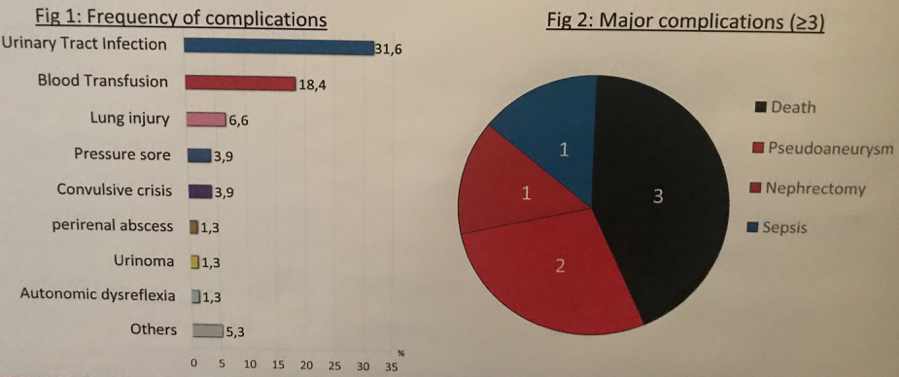The aforementioned study consisted of a retrospective, monocentric study that analyzed records between 2005 and 2017 of patients with either neurologic disorders or severe motor disability. Utilizing this patient accrual procedure, 76 PCNL procedures were identified for 54 patients. If the PCNL procedure resulted in kidneys attaining a stone-free status, the procedure was considered a success. Stone-free was defined as the complete absence of stones with no residual fragments identified via CT and renal ultrasound. Early postoperative complications were reported according to Clavien-Dindo classification.
In the patient cohort selected, disorders such as spinal cord injury, cerebral palsy, multiple sclerosis, spina bifida, and traumatic brain injury, among others, were identified. The success rate for these procedures was fairly low with only 60.5% of procedures ending with a stone-free status with postoperative imaging exams. Following 35.5% of procedures, repeat surgery was required within 3 years of the original procedure. In 15.8% of these repeat surgeries, stone-free status was achieved after the second procedure and did not require any further surgeries. The reported complication rate in this patient cohort for Dr. Chelghaf’s center was 43.4%, 34.2% of these were minor while 9.2% were major. Of note, the major complications consisted of sepsis (n=1), nephrectomy (n=1), pseudoaneurysm (n=1), and death (n=3).
While concluding his presentation, Dr. Chelghaf reiterated the complicated nature of these procedures on patients with neurologic disease and urged the audience to show extra caution when operating on these patients. Of note, he mentioned that the complication rate is slightly lower in ureteroscopic procedures on patients with these types of conditions, however, the complication rates are still relatively high compared to an average, more-healthy patient.

Figures 1 & 2: Frequency of complications and major complications (Clavien ≥ 3).
Presented by: Ismael Chelghaf, Resident, Nantes Hospital
Co-Authors: Fançois-Xavier Madec, and Marie-Aimée Perrouin-Verbe
Author Affiliation: Urology Department, University Hospital, Nantes, France
Written by: Zachary Valley, Twitter: @ZacharyAValley, Department of Urology, University of California-Irvine, medical writer for UroToday.com at the 36th World Congress of Endourology (WCE) and SWL - September 20-23, 2018 Paris, France


